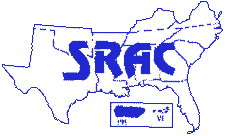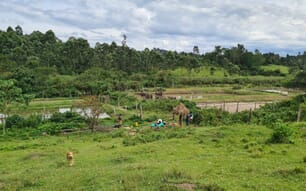Attitudes toward yellow perch vary with its relative availability and with historical regional preferences. In much of the midwestern and central Atlantic areas of the United States and in central Canada, however, yellow perch are highly valued as food fish. Demand for this fish in the vicinity of the Great Lakes is particularly high, but commercial harvest of wild yellow perch has declined since the mid 20th century (Fig.1).
Annual harvests from all the Great Lakes averaged more than 23 million pounds from 1950 to 1970, but just 5.75 million pounds from 1990 to 2000. The commercial harvest of yellow perch is prohibited in some areas because of low populations and closes periodically in other areas because of concerns about contaminants.
Beginning in the 1970s, high market values and declining commercial catches prompted widespread interest in commercial culture of this species, primarily in midwestern states. Yellow perch flesh is very high quality, with a firm, flaky texture and mild flavor. The meat has less fat (<1 percent) than other popular cultured food fish, and also fewer calories per 100-gram serving (91). Yet it is high in protein (19.5 percent) and contains a modest level of omega-3 fatty acids (0.3 percent). The lower fat content of yellow perch can result in a longer shelf life.
Yellow perch have a variety of regional names, including lake perch, ringed perch, raccoon perch, Ned, yellow Ned, redfin and redfin perch. The fish are long and slender, gold to brassy green on the dorsal surface and sides, and usually have six to eight vertical black bars on each side (Fig. 2). There are two dorsal fins, with the first supported by sharp spines and the second by soft rays. The pectoral, pelvic and anal fins are supported by one to three spines followed by a series of soft rays.
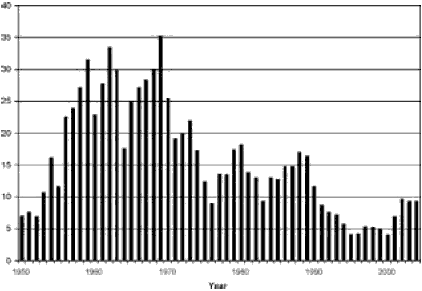
Figure 1. Commercial landings of yellow perch in the Great Lakes (U.S. and Canada) since 1950.
Natural history
Yellow perch belong to the largest group of fish—the spiny-rayed fishes, order Perciformes. This group includes more than 9,200 species, most of which occur in marine inshore habitats. Fewer than 20 percent of these species live in freshwater, although slightly more may live in freshwater part of their lives. The perch family, Percidae, consists entirely of freshwater species that are distributed in the temperate and subartic zones of the Northern Hemisphere. In addition to the yellow perch, this family includes other well-known North American commercial and sport fish such as the walleye, Sander vitreus, and the sauger, Sander canadensis, as well as numerous species of small stream fishes called darters.
Range
The original range of yellow perch included freshwater and some brackish water habitats from Nova Scotia southward to South Carolina, westward to Kansas and the Montana border, then northwest into Canada, throughout Alberta, and to the southern portions of the Northwest Territories. Yellow perch historically occurred throughout the Canadian provinces bordering the U.S., with the exception of British Columbia. Their range did not originally include river drainages entering the Pacific Ocean or the Bering Sea. The species has since been introduced into nearly every state in the U.S., though some states now limit or prohibit yellow perch introductions. Culturists considering yellow perch should consult state authorities.
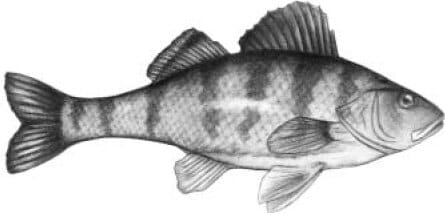
Figure 2. Yellow perch, Perca flavescens.
Reproduction
Yellow perch are spring spawners that mature during late fall or winter and lay their egg masses when daylength increases and temperature rises. Spawning usually peaks at about 10 °C (50 °F). Most spawning occurs in March and April, although it may peak as early as December or January in some southeastern states. The females release a unique gelatinous, accordion-like strand of eggs called a “ribbon” (Fig. 3). As many as four or five males may fertilize the eggs in the tube-like matrix, which is slightly heavier than water. The micropyles of the eggs reportedly face inward, so the sperm must penetrate the matrix openings to complete fertilization.
The egg strand or ribbon may become entangled on vegetation or debris in the water, or it may settle to the bottom of rivers or streams. The ribbons can be more than 6 feet long and are proportional to the size of the female. Fecundity varies with fish size, age and nutritional status, but most females lay about 120 to 250 eggs per mm of their length. A more precise estimate of the fecundity of yellow perch from Lake Erie was given as log (fecundity) = -4.119 + 3.629 x log (total length in mm) (from Great Lakes Fisheries Commission Technical Report 39).
Yellow perch females have a distinctive gonadal structure. The single ovary develops from a paired structure that fuses during the fish’s early development. The ovary is blunt and rounded at the anterior end and tapers toward the posterior end. The testes of male perch are paired and elongate, like other species of fish. Until the fish are mature, it is difficult to distinguish between the sexes on the basis of external characteristics.
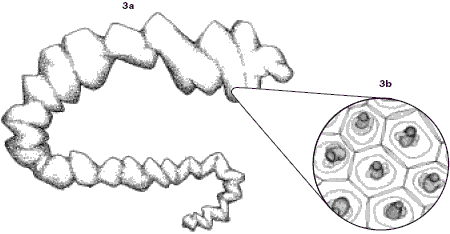
Figure 3a. Yellow perch egg mass or “ribbon.”
Figure 3b. Magnified perch eggs showing embryos.
Differentiation of the gonads of yellow perch begins in fish as small as 10 to 12 mm (about 0.5 inch) long. Some yellow perch males may mature in their first year, but most mature at age 2 or older. Most wild perch females mature at age 3 or 4 years. In culture settings, a higher percentage of females will mature at age 2. Perch show a sexual dimorphism in growth that can be detected 60 days or less after hatching.
Female perch grow faster than males, but yellow perch grow more slowly than most other species, requiring a year or more to reach the preferred harvest size of 110 to 150 grams (0.25 to 0.3 pound). Yellow perch may live up to 10 years and may reach a maximum size of 1.0 to 1.5 kg (2 to 3 pounds) in optimal conditions. However, most perch live only to about 5 years of age, particularly in the southernmost areas of their original range.
Adult perch do not care for the eggs or larvae. The eggs hatch after a temperature-dependent incubation period, typically about 3 weeks. Larval perch are active swimmers and initially show a positive phototaxis, moving toward the surface or brighter light sources. The larvae feed on very small zooplankton or zooplankton larvae, including rotifers, copepod nauplii and smaller cladocerans. As they grow, the small perch consume larger zooplankton, insect larvae and other benthic organisms, and eventually small fish, including other perch. During early life stages, yellow perch are cannibalistic, particularly when food is limited. Yellow perch consume a wide range of organisms during their lives and are quite adaptable to a variety of foods and habitats. They feed almost exclusively by sight, and primarily at dusk and dawn.
Culture techniques Spawning
Yellow perch have a single spawning period each year. They lay eggs when the arrival of spring brings rising temperatures and longer photoperiods. Depending on the latitude, yellow perch may spawn as early as January in North and South Carolina and as late as June in northern Canada. Yellow perch must be exposed to cold temperatures for their eggs to develop and mature. In the states bordering Canada and northward, the maximum temperature for this “chill period” is as low as 6 °C; it may be closer to 10 °C (50 °F) at the southernmost fringe of perch distribution.
The necessary duration of the exposure to cold temperatures was determined to be at least 185 days for fish in Minnesota, but the optimum exposure time for perch from other areas is unknown. In general, yellow perch from more southern latitudes do not require a period of cold exposure that is as long or as cold as that needed by fish from more northern areas. Researchers and culturists have successfully manipulated the spawning time of yellow perch by compressing or extending the reproductive cycle, but the results have not been entirely satisfactory from a culture perspective.
Male yellow perch
respond favorably to a compressed, extended or shifted photo-thermal cycle. But females have exhibited poor egg quality, asynchronous oocyte maturation within the ovary, or little change in spawning time at all. The most promising approach for making eggs available throughout the year is believed to be shifting the photo-thermal cycle so that the cold period occurs at different times of year for different groups of perch. Perch may need to be exposed to the offset annual photo-thermal cycle beginning in their first year.
Yellow perch spawning can be done manually or naturally. Most yellow perch production in the U.S. still depends upon eggs produced through “natural spawning” by stocking adult perch in culture ponds, by transferring egg ribbons collected from ponds or lakes (wild or captive) into fertilized ponds, or by collecting fingerlings from extensively managed ponds containing perch broodstock. More commercial culturists are using artificial spawning and tank incubation of fertilized eggs to better synchronize larval production (which reduces cannibalism), improve hatching success, and allow more accurate enumeration of larvae. When a female perch is ready to spawn, the abdomen is swollen and becomes flaccid and the vent will protrude and may appear sac-like. At this point, the spawning period of a group of perch can be shortened from about 3 weeks to only 3 or 4 days by administering chorionic gonadotropin (e.g., Chorulon®) or an analogue of gonadotropinreleasing hormone (GnRHa).
GnRHa is not currently approved by the FDA for use with this species, but it is being considered and it may be available under an investigational new animal drug application (INAD). After hormone treatment, the fish will need to be examined frequently for ovulation. Or, they can be tank spawned if maintained at low densities with two to four ripe males per female. Fertilization is more consistent with manual spawning, however. Manual spawning of yellow perch requires some experience and skill because of the unique egg ribbons.
Applying gentle pressure on the abdomen of a female that has ovulated will cause the egg strand to be expelled in one mass. Eggs can be fertilized with a wet or dry method as long as there is adequate contact by the sperm throughout the egg ribbon (the micropyle openings face the inside of the egg ribbon). Egg ribbons incubated in tanks must be suspended on wires or racks to allow adequate water circulation through the eggs. Incubation time for perch eggs is 95 to 108 degree-days (C) above 5 °C (41 °F), or about 12 days at 13 to 15 °C (55 to 59 °F). Temperature should be increased gradually to the optimum hatching temperature of 15 °C (59 °F). The methods and facilities used to incubate fertilized perch eggs are determined by the approach used to grow the fingerlings.
Larva and fingerling culture
Because perch larvae have small mouths and require live zooplankton for their initial feeding (Fig. 4), most perch are still produced in fertilized ponds from egg incubation through fingerling culture. One approach is to stock adults into ponds containing suitable substrate (e.g., branches or other three-dimensional structure) for spawning, then remove them after spawning to keep them from preying on young fish. The eggs are left in the ponds to hatch. The primary drawback to this approach is that spawning may take place over an extended period of time, which results in different ages and sizes of fish occupying the pond and increases cannibalism. To avoid this problem, perch may be tank spawned or artificially spawned and the eggs incubated in a tank system equipped with suitable structure to suspend the eggs above the tank bottom.
About 15 days after fertilization, or approximately 3 days after eye pigment develops, the larvae become very active and will be ready to hatch. The tanks are gently agitated to help the larvae exit the egg mass. One method uses a commercial paint stirring paddle and a slow-speed drill. The eggs are placed in a bucket, then gently mixed until the egg mass is broken down. The remnants of the egg mass will settle to the bottom and the larvae will accumulate at the top and can be harvested. The larvae are then counted and stocked into fertilized ponds. To ensure that there will be a food supply of appropriate size (e.g., rotifers), ponds should be filled only a short time before stocking the larvae.
Stocking rates for yellow perch larvae range from 150,000 to more than 600,000 per acre, depending on the stage at which they will be harvested. If the perch are to be left in the pond longer than 2 months, the stocking density should be at the lower end of the range. Feeding of the young fish begins when they reach 17 to 20 mm in length and continues until they are harvested in the fall. With this production system, the expected harvest is 300 to 600 pounds per acre (337 to 664 kg/ha). However, there will be a good deal of variation among individual fish and in survival rates. Fingerlings produced this way are also reputed to be more difficult to train to feed strictly on a pelleted diet, and may not be desirable for growout in a tank culture setting.
Many producers are now using a combination pond/tank rearing scheme, wherein the fish are artificially spawned and eggs are incubated in tanks. The larvae are then stocked into ponds at high densities, sometimes nearly 1 million per acre, but the perch are harvested when they are 25 to 35 mm (~ 1 inch) long and moved into tanks for feed training. In ponds, 30 to 60 percent of the larvae stocked would be expected to survive to this size. The small perch are feed trained by keeping them at high densities and offering feed continuously. Natural food is not offered during this process. As many as 80 percent of the small fingerlings can be converted to a prepared diet in this way, but they will be very susceptible to cannibalism if they vary greatly in size.
The intensive tank culture of yellow perch larvae on a commercial scale has been less successful than extensive pond culture. While research is continuing to improve these results, many specific parameters such as optimal stocking densities, light levels and tank colors, prey concentrations and feeding frequencies have yet to be defined. Newly hatched perch larvae are small (4.5 to 6.5 mm; 0.2 to 0.25 inches TL) and require small prey initially. In general, perch larvae are offered rotifers for 3 to 5 days beginning the day after hatching. Then newly hatched brine shrimp nauplii are offered in addition to the rotifers. The rotifers are discontinued after day 10 and the perch are fed brine shrimp nauplii until they are well developed and can be weaned to artificial diets beginning at about day 21. The mixture of brine shrimp and artificial diets continues until the fish are 15 to 18 mm (0.6 to 0.7 inches) TL, or about 4 weeks after hatching, depending upon temperature.
Then live foods are discontinued and the fish are fed only the artificial diet. In an intensive tank production system, survival from hatching to weaning is highly variable and relatively low, ranging from less than 5 percent up to 30 percent in the most successful cases. Weaning success can be improved by using specialized larval fish diets, by mixing frozen midge larvae with feeds, or by coating commercial salmonid starter diets with feeding stimulants. Because small (< 50 mm) perch are attracted to light, light can be used to concentrate the small fish in tanks or ponds for feed training and for harvest. Lighting within the water column of the tank is reported to be better than other sources of lighting for training young perch to an artificial diet.
Growout
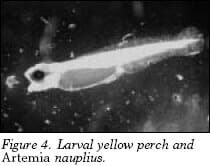
Once weaned to prepared diets, yellow perch juveniles kept at optimal temperatures (25 °C, range 23 to 26 °C; 77 °F, range 73 to 79 °F) and fed to satiation can reach market size of 120 to 150 grams in about 1 year, though the growth rates of individual perch will vary widely if fish are not tightly graded. Female perch grow faster than most males. Perch growth virtually stops as temperatures drop below 10 °C (50 °F). At temperatures higher than 26 °C (79 °F), yellow perch are intolerant of handling, become much more susceptible to disease, and begin to show reduced growth. Yellow perch grown in culture ponds in the southeastern U.S. have tolerated temperatures of nearly 30 °C (86 °F) as long as they were undisturbed. However, growth slowed and feeding nearly stopped. Water temperature is one of the primary factors that determines where yellow perch can be grown and the culture system that can be used in the Southeast.
Early efforts to culture yellow perch commercially used recirculating tank systems, but with limited success. Yellow perch can be grown in open or closed tank systems and are tolerant of crowding and handling as long as water temperature remains below 22 to 24 °C (72 to 75 °F). Feed-trained perch fingerlings perform better at high stocking densities (> 10,000 fish/m3; 280 fish/ft3). At 60 kg/m3 (3.7 lb/ft3) and higher, adult perch growth may decline, but this has been attributed more to water quality than to the fish themselves (based upon studies with the closely related European perch). At typical harvest sizes for yellow perch—0.25 to 0.3 pound—this density translates to 400 to 500 fish per m3, or about 10 to 15 fish per ft3.
Static and flow-through pond systems also have been used with yellow perch. In the southeastern U.S., temperatures in static ponds will be too high for optimal growth for several months each summer, which limits their use for commercial culture. In areas where water remains cool enough, or where sufficient amounts of cool water can be added to keep the pond temperature below 26 °C, pond production of perch may be considered. In more northerly areas of the U.S., pond production of yellow perch may yield as much as 3,000 to 4,500 pounds per acre (3,500 to 5,000 kg/ha). Where a water source is available for operating ponds as flow-through systems so that optimal temperatures and water quality can be maintained, annual production can be even higher.
Yellow perch show little or no growth at temperatures below 10 °C (50 °F). Growth rates increase from about 0.5 percent per day at 15 °C (59 °F) to 1.5 percent per day at 24 °C (75 °F), assuming food and other conditions are not limiting. At temperatures higher than 26 °C (79 °F), growth rate begins to decline. Higher rates of growth may be achieved if allfemale stocks are used, especially if fish are harvested before the gonads are fully mature.
In pond systems in the Southeast, temperatures are well above or below the optimum for perch growth much of the year and most perch will not reach harvest size during the first growing season. Fish held over the winter may lose weight and conditions will favor sexual maturation during the second season. In tank systems or other systems with controlled temperatures, market sizes can be reached in 1 year or less at optimal temperatures. This avoids the problems associated with sexual maturation in most of the fish. However, the lack of year-round supplies of fingerlings for stocking such systems is a problem.
Diets
Yellow perch are believed to require protein levels between 34 and 44 percent and lipid levels of up to 12 percent. These levels are similar to those of rainbow trout diets. Higher lipid levels may increase the rancidity of stored flesh. Commercial yellow perch diets are available, but smaller sizes of trout diets also can be used. To achieve maximum growth rates at optimal temperatures, perch will need to consume 2 to 3 percent of their body weight per day. Typical food conversion rates are 1.5 to 2 units of feed per unit of weight gain if fish are fed efficiently. In pond systems, the most vigorous feeding response usually occurs early in the morning. Perch can be fed floating feeds distributed by hand or with automated feeding systems. Demand feeding systems also can be used, especially in tank systems.
Diseases
There has not been enough research or culture experience to identify all species-specific parasitic, bacterial, viral or fungal pathogens that may occur in tank or pond systems. Perch appear to be relatively hardy when water quality and temperature conditions are good, and do not seem any more susceptible to common fish pathogens than other commercially cultured species. In ponds and other open water systems, perch are susceptible, like other fish species, to parasites such as ciliated protozoans (e.g., Ichthyobodo spp. or Trichodina spp.) or trematodes (e.g., Gyrodactylus spp).
When water temperature is higher than the optimal level, perch in southeastern ponds have been affected by common bacterial diseases such as those caused by Aeromonas spp., Pseudomonas spp. and Flavobacterium spp. Perch in tank systems also have been diagnosed with these bacteria, as well as with Staphylococcus sp., Streptococcus sp., Enterobacter spp. and others. None of these is unique to yellow perch. The types of diseases encountered by perch culturists will reflect the environment and systems in which the fish are grown. There are no therapeutants specifically approved for use with perch.
Markets and economics
Yellow perch are a very popular food fish in the midwestern U.S. and most of the markets for perch are located in that region, particularly in the vicinity of the Great Lakes where retail prices have been as high as $16 per pound for fillets. A distributor in that region has estimated market demand to be 50 to 100 million pounds annually. Retail markets for perch have not developed in southeastern states. Commercial harvests of yellow perch in the U.S. averaged just under 1.8 million pounds per year over the past decade, with current imports of fillets just under 4 million pounds annually. The average price of imported frozen fillets is $4.75 per pound, according to reports from the National Marine Fisheries Service. Domestic wholesale prices for perch fillets are somewhat higher, however. Nearly all perch is sold as scaled, skin-on fillet, with an expected yield of 38 to 42 percent of round weight.
In the Midwest, production costs for perch grown in ponds are estimated to total slightly more than $2.00 per pound. Costs increase to more than $3.00 per pound as production decreases from 50,000 pounds per year to 5,000 pounds per year. Production cost estimates for the Southeast are not available. It costs slightly more to produce perch in recirculating tank systems—approximately $2.50 per pound. In both tank and pond systems, the greatest expense is purchasing the fingerlings.
The second highest expense is feed. Compared to other established food fish species in the U.S., the cost of perch fingerlings is significant because of the relatively small harvest size of the fish (at least four fingerling perch are required to produce 1 pound of 0.25- to 0.3-pound perch at harvest) and because perch fingerlings are less available. The cost of fingerlings represents approximately 40 percent of the total production cost. This is one of the primary constraints to the profitable culture of perch.
Prices paid to culturists range from $2.00 to $3.00 per pound for whole perch and are influenced by the availability of wild-harvested and imported perch and seasonal demand. Brokers and processors seem ready to purchase perch from producers in the Southeast, but transportation costs may reduce that demand when supplies closer to their markets are available.
Summary
Yellow perch are readily accepted in the marketplace as a firm, flaky fish with a mild flavor. There is an established demand for perch in the vicinity of the Great Lakes. The potential for perch aquaculture in the southeastern U.S. will be limited to those areas with suitable supplies of cool water and access to midwestern markets, unless local niche markets can be developed.
Production techniques for perch still need to be refined and optimized, but perch can be grown successfully in tank and pond systems and are tolerant of a wide range of water quality conditions if temperatures are suitable. Current constraints to production of yellow perch in the Southeast include high fingerling costs and seasonal availability, a relatively slow growth rate, lack of local retail markets, and a market price that is responsive to wild commercial harvests and competitive imports.
References
Craig, J. F. 2000. Percid Fishes. Systematics, Ecology, and Exploitation. Oxford, UK: Blackwell Science, Ltd. 352 pp.
Malison, J. A. 2003. A white paper on the status and needs of yellow perch aquaculture in the North Central Region. North Central Regional Aquaculture Center, http://ag.ansc.purdue.edu/aquanic/n crac/wpapers/YellowPerch11-21- 03.htm. 17 pp.
Riepe, J. R. 1997. Enterprise budgets for yellow perch production in cages and ponds in the north central region, 1994/95. North Central Regional Aquaculture Center Technical Bulletin Series #111. 46 pp.
July 2006

